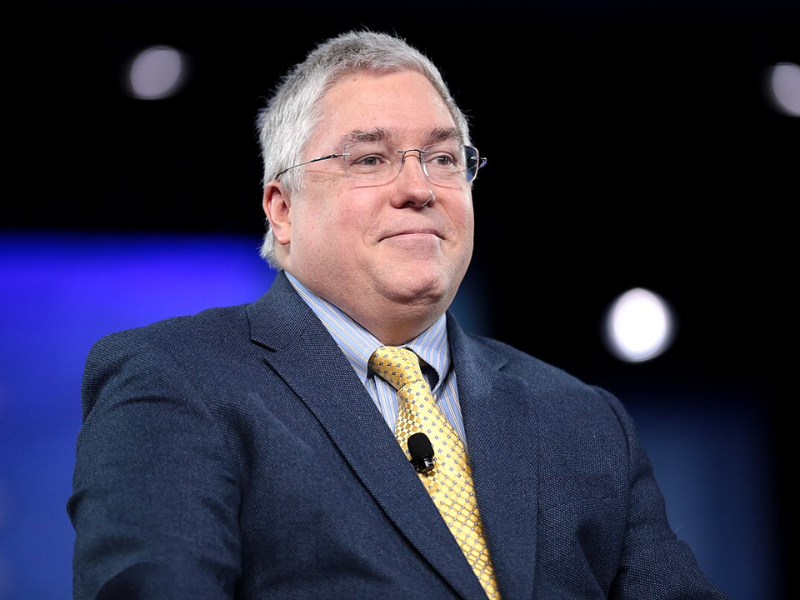
At this moment, just 39 days into Joe Biden’s presidency, it’s impossible to predict whether he will seek a second term. Biden aides say he won’t create a reelection committee until after the midterms.
Even if he passes on another run, Vice President Kamala Harris’s chances at the top prize, and indeed those of any possible 2024 Democratic presidential nominee, would be highly dependent upon the success or failure of Biden’s presidency—not as determined by historians or opinion leaders, but by the public.
So what are American’s first impressions of our 46th president?
As of Monday afternoon, Biden’s job-approval rating in the RealClearPolitics average was 54 percent, with 39 percent disapproving.
The FiveThirtyEight weighted poll rating has Biden at the same 54 percent approval, with his disapproval 2 points lower at 37 percent. Both averages have shown very little change from week to week.
Of the polls I tend to favor, the approval ratings ranged from a low of 49 percent from Quinnipiac University to a high of 57 percent from Gallup. The well-respected Monmouth University poll came in at 54 percent, right in between.
At this same point in 2017, RCP had President Trump underwater by 7 points, 43 percent approval to 50 percent disapproval. FiveThirtyEight’s weighted approval level for Trump was 6 points under—44 percent approve, 50 percent disapprove.
Stepping back in history a bit, using Gallup as a guide (it is the only pollster with decades of historical data), Biden’s 56 and 57 percent approvals so far in two Gallup polls are a bit lower than the 57 and 62 percent approval levels that George W. Bush sported at this point and lower still than Barack Obama’s 64 and 67 percent numbers. Bill Clinton had a somewhat wider range, at 51 and 59 percent.
The rise of tribal politics and negative partisanship began to take hold during Clinton’s presidency and has steadily escalated ever since.
Clinton was hated by more Republicans than any previous Democratic president, and George W. Bush was loathed by more Democrats than any prior Republican occupant of the Oval Office. Then Obama was hated by Republicans even more than was Clinton, and Trump by Democrats even more than George W. Bush was. This hyper-partisanship makes it pointless even to compare the current era with the time of Jimmy Carter, Ronald Reagan, and George H.W. Bush.
Trump’s numbers stand out nevertheless. It took George W. Bush 1,205 days before his Gallup disapproval rating ever hit 50 percent, Obama 572 days, and Clinton 150 days. But Trump hit that mark not even two weeks into the job, going from 45 percent approve, 47 percent disapprove in Gallup interviews on Jan. 20-29 to 43 percent approve, 52 percent disapprove in their calls from Jan. 30 to Feb. 5.
We obviously have no idea where Biden’s approval and disapproval are heading, but he is at least starting off on a different trajectory than Trump.
Focusing on Gallup’s February interviewing, Biden’s 12 percent approval, 88 percent disapproval among Republicans versus 96 percent approval and 4 percent disapproval among Democrats suggest that tribalism is alive and well. Thus one key number to watch is his approval among independents: So far, 53 percent approve of Biden’s performance, compared to 37 percent who do not.
Trump showed the danger of overindulgence in the care and feeding of a party base at the expense of independents, though the closeness of November’s election in key swing states shows that the question isn’t as cut-anddried as some might think.
Trump didn’t pull it off, but he certainly beat the point spread.
For those of us who believe that there had been a wave building in the first half of October but that it dissipated or was diverted in the last two weeks, those independents are a key group to watch. My own view is that two years of talk about Democratic socialism, “defunding the police,” “abolishing ICE,” the Green New Deal, and Medicare-for-all in the ears of independents and any other undecided or swing voters diverted that wave from hitting the beach.
Instead of Republicans getting hit, it was independents getting cold feet that turned an election from not that close to much tighter than expected, resulting in a lot of surprised people.
It should be emphasized that the polling we have seen so far is hardly predictive of what will happen in the midterm elections, but it is a useful metric to determine which way the winds are blowing.
This article was originally published for the National Journal on March 2, 2021.











Subscribe Today
Our subscribers have first access to individual race pages for each House, Senate and Governors race, which will include race ratings (each race is rated on a seven-point scale) and a narrative analysis pertaining to that race.